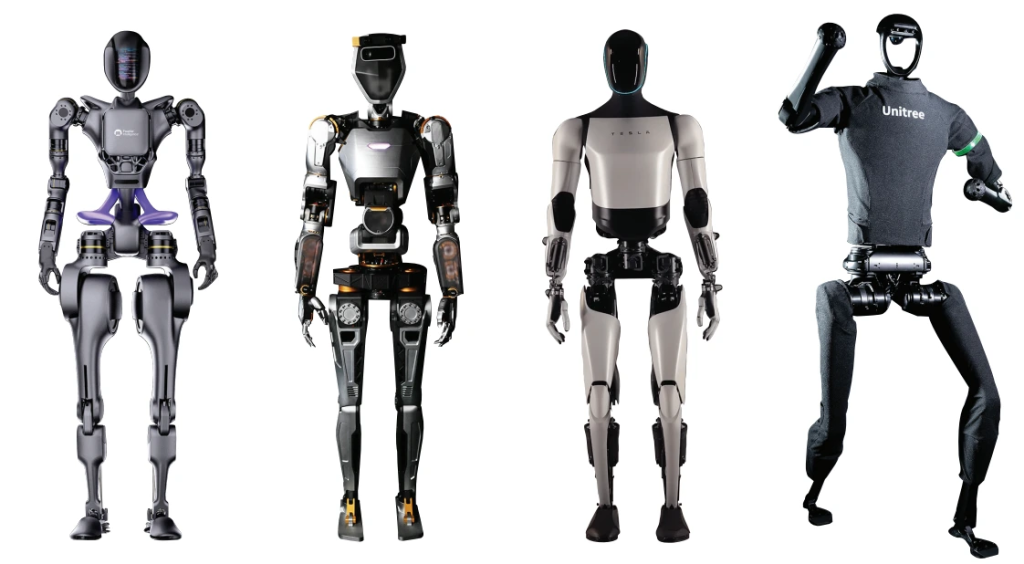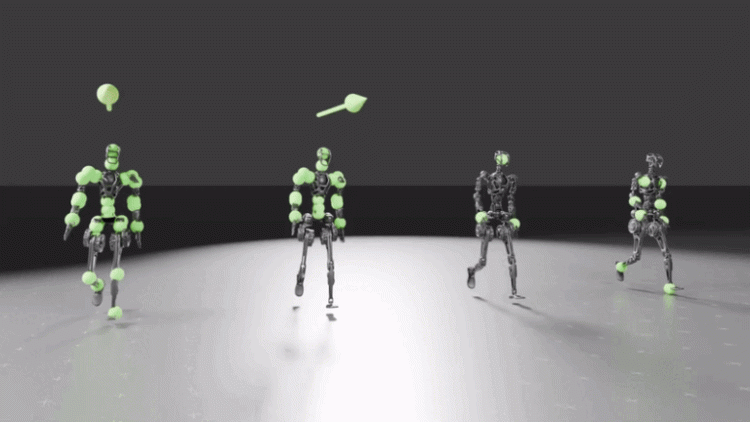Introduction
In recent decades, the field of robotics has made extraordinary strides, particularly in the development of humanoid robots—machines designed to replicate the appearance and behaviors of human beings. Once confined to science fiction, these robots are now moving closer to becoming a tangible part of our daily lives, from providing assistance in elderly care to acting as personal companions, to even serving roles in hazardous environments. The relentless pursuit of enhancing the realism and functionality of humanoid robots is not just a testament to technological innovation, but a reflection of the increasing need for intelligent systems capable of handling complex, human-centered tasks. This article explores the current developments in humanoid robotics, the challenges faced by researchers, and the potential future applications that could transform industries ranging from healthcare to entertainment.
The Evolution of Humanoid Robots
Early Beginnings and Foundations
The concept of humanoid robots dates back to ancient myths and mechanical inventions, but it wasn’t until the mid-20th century that robotics began to take a more structured form. Pioneers like George Devol and Joseph Engelberger, who introduced the first industrial robot “Unimate” in 1961, laid the foundation for the robotics industry. However, it was not until the late 1990s and early 2000s that humanoid robots gained attention, especially with the development of advanced sensors and artificial intelligence.
Milestones in Humanoid Robotics
Some key milestones in the development of humanoid robots include the introduction of Honda’s ASIMO in 2000, a robot designed with the ability to walk, run, and perform human-like tasks. ASIMO’s development was a breakthrough in robotics, setting the stage for further advancements in human-robot interaction. In the same period, companies like Boston Dynamics started developing robots like BigDog, a quadruped robot, which while not humanoid, demonstrated advanced mobility that would influence future humanoid designs.
The 2010s saw a surge in humanoid robot development, with companies like SoftBank Robotics introducing Pepper, a social robot designed to interact with humans through conversation and emotion recognition. Pepper, though not capable of performing physical tasks like ASIMO, showcased the potential of humanoid robots as companions and assistants, capable of communicating and adapting to social contexts.
Advancements in Technology Driving Realism
Artificial Intelligence: The Brain Behind Humanoid Robots
The core of any humanoid robot’s functionality lies in artificial intelligence (AI). While early robots relied heavily on pre-programmed instructions and limited decision-making capabilities, the introduction of AI has drastically changed the landscape. Machine learning algorithms now allow robots to adapt to their environments, learn from interactions, and even predict the needs of human users.
For example, AI-driven robots can now understand and process natural language, recognize emotions, and make complex decisions in real-time. This level of sophistication in AI is essential for creating robots that not only look human but can interact in ways that feel natural and intuitive. AI also enables humanoid robots to process sensory data from cameras, microphones, and touch sensors, allowing them to navigate environments and respond to stimuli in ways that mimic human behavior.
Mechanical Advancements: Improving Movement and Dexterity
To truly replicate human-like behavior, humanoid robots need to have mobility and dexterity. Researchers have made substantial progress in developing robots with more natural, fluid movements. Advanced actuators and motors are being developed to provide robots with greater flexibility and precision in their movements, enabling them to walk, run, climb stairs, and manipulate objects with human-like dexterity.
Exoskeletons, powered by artificial muscles and hydraulic systems, allow robots to perform tasks such as lifting heavy objects, much like a human. The development of soft robotics, which uses flexible materials instead of rigid parts, is also a promising direction for creating robots that can better interact with fragile objects and adapt to different environments. These innovations in robotics have significant implications for industries like logistics, healthcare, and manufacturing, where robots can work alongside humans or perform complex physical tasks autonomously.
Sensory Systems: Enhancing Perception
A critical component of humanoid robots is their ability to perceive and interact with the world around them. Research in sensory systems—such as vision, touch, and hearing—has enabled robots to sense their environment and respond accordingly. Vision systems, based on advanced computer vision algorithms, allow humanoid robots to recognize faces, objects, and even specific gestures.
Similarly, tactile sensors, which simulate the sense of touch, allow robots to manipulate objects with great precision. For instance, a humanoid robot could “feel” the texture of an object and adjust its grip accordingly, much like a human would. Advances in haptic feedback technology have also made it possible for robots to provide tactile sensations to human users, enhancing their ability to engage in physical interactions.
Challenges in Creating Realistic Humanoid Robots
While progress has been substantial, several challenges remain in the development of humanoid robots that are truly functional, realistic, and capable of widespread adoption.
Human-Robot Interaction (HRI)
One of the biggest challenges in humanoid robotics is ensuring that robots can interact with humans in a socially acceptable and meaningful way. Robots need to be able to understand human emotions, gestures, and facial expressions. Achieving smooth and natural communication between humans and robots is crucial for creating robots that are not only functional but also relatable.
The concept of “uncanny valley,” first proposed by robotics professor Masahiro Mori in 1970, refers to the discomfort people feel when a robot closely resembles a human but has subtle differences in appearance or behavior. These differences can make the robot appear eerie or unsettling, hindering its acceptance in society. To overcome this challenge, researchers are exploring ways to make humanoid robots appear more natural, such as through improved facial expressions, body language, and voice modulation.
Power and Energy Efficiency
A significant challenge for humanoid robots is their power requirements. Robots need to be able to operate for extended periods without frequent recharging, which requires advanced battery technology. Current lithium-ion batteries, while common, have limitations in terms of weight and capacity. Researchers are exploring alternative energy sources, such as fuel cells and energy-harvesting technologies, that could allow humanoid robots to operate more efficiently and for longer durations.
Safety and Ethics
The integration of humanoid robots into society raises important ethical and safety concerns. For instance, there are questions surrounding the potential displacement of workers in industries where robots could take over manual or repetitive tasks. Furthermore, the safety of humanoid robots is paramount, especially in environments where robots interact with humans. There is a growing need for standards and regulations to ensure that robots do not cause harm, whether intentionally or accidentally.
Another concern is the issue of privacy. Humanoid robots, particularly those with AI capabilities, are capable of collecting vast amounts of data, such as personal information and behavioral patterns. Ensuring that this data is protected and used ethically will be a critical challenge as humanoid robots become more integrated into everyday life.

Applications of Humanoid Robots
As the capabilities of humanoid robots continue to expand, so too do their potential applications. These robots are no longer just prototypes or futuristic concepts; they are already beginning to find their place in various sectors.
Healthcare: Aiding the Elderly and Disabled
One of the most promising areas for humanoid robots is healthcare, particularly in assisting the elderly and disabled. Humanoid robots can provide companionship and help with daily activities, such as dressing, eating, and mobility. Robots like Japan’s “Robear” are being developed to assist healthcare workers in lifting and moving patients, reducing the physical strain on caregivers.
Humanoid robots also have the potential to offer psychological benefits. For example, they can help reduce loneliness by engaging in conversation, providing emotional support, and offering social interaction. These robots could also play a crucial role in the rehabilitation of patients recovering from surgeries or injuries by helping them with physical exercises.
Education and Entertainment
Humanoid robots are also being explored in the fields of education and entertainment. Robots like SoftBank’s Pepper have been used in schools to engage students in interactive learning experiences. In addition, robots with advanced AI can serve as personal tutors, adapting their teaching style based on the needs of individual students.
In the entertainment industry, humanoid robots are being used to create realistic performances in films and video games. Virtual and augmented reality technologies are also being integrated with humanoid robots to create immersive experiences for audiences.
Disaster Relief and Hazardous Environments
Humanoid robots could also play a vital role in disaster relief operations, particularly in environments that are too dangerous for human workers. Robots capable of navigating debris, searching for survivors, and providing real-time data could significantly improve the efficiency of rescue operations.
In addition, humanoid robots could be deployed in hazardous environments such as nuclear plants, deep-sea exploration, or outer space missions. Their ability to perform complex tasks while protecting human life makes them indispensable for these high-risk endeavors.
The Future of Humanoid Robots
The future of humanoid robots is filled with immense potential. As researchers continue to refine the technologies that drive these machines, we can expect humanoid robots to become more integrated into society. They could evolve to provide not just assistance in mundane tasks, but also enhance the quality of life for individuals through companionship, emotional support, and personalized care.
However, the path to widespread adoption of humanoid robots will require overcoming several technical, ethical, and social hurdles. Ensuring that these robots are safe, reliable, and trusted by the public will be key to their success. Additionally, interdisciplinary collaboration between robotics engineers, AI researchers, ethicists, and policymakers will be necessary to navigate the complexities of integrating humanoid robots into the fabric of daily life.
Conclusion
The development of more realistic and functional humanoid robots is a transformative endeavor that has the potential to revolutionize multiple industries and improve the quality of life for people around the world. From healthcare and education to disaster relief and beyond, humanoid robots are poised to play a critical role in shaping the future. As we continue to advance in this field, the collaboration of technology, ethics, and human-centered design will be crucial to realizing the full potential of these machines and ensuring they serve humanity in a positive and meaningful way.







































